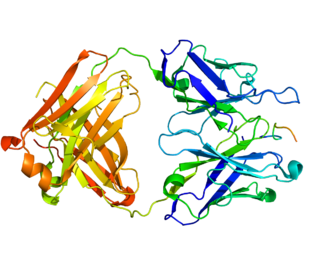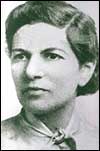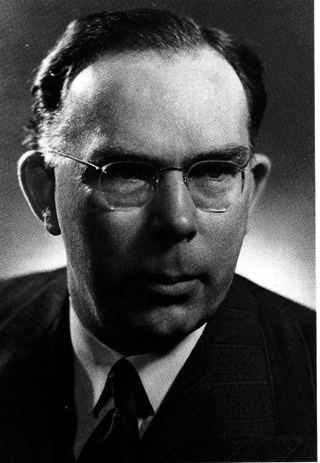Related Research Articles

Radiation therapy or radiotherapy, often abbreviated RT, RTx, or XRT, is a treatment using ionizing radiation, generally provided as part of cancer therapy to either kill or control the growth of malignant cells. It is normally delivered by a linear particle accelerator. Radiation therapy may be curative in a number of types of cancer if they are localized to one area of the body, and have not spread to other parts. It may also be used as part of adjuvant therapy, to prevent tumor recurrence after surgery to remove a primary malignant tumor. Radiation therapy is synergistic with chemotherapy, and has been used before, during, and after chemotherapy in susceptible cancers. The subspecialty of oncology concerned with radiotherapy is called radiation oncology. A physician who practices in this subspecialty is a radiation oncologist.

A brain tumor occurs when abnormal cells form within the brain. There are two main types of tumors: malignant tumors and benign (non-cancerous) tumors. These can be further classified as primary tumors, which start within the brain, and secondary tumors, which most commonly have spread from tumors located outside the brain, known as brain metastasis tumors. All types of brain tumors may produce symptoms that vary depending on the size of the tumor and the part of the brain that is involved. Where symptoms exist, they may include headaches, seizures, problems with vision, vomiting and mental changes. Other symptoms may include difficulty walking, speaking, with sensations, or unconsciousness.
A radiation oncologist is a specialist physician who uses ionizing radiation in the treatment of cancer. Radiation oncology is one of the three primary specialties, the other two being surgical and medical oncology, involved in the treatment of cancer. Radiation can be given as a curative modality, either alone or in combination with surgery and/or chemotherapy. It may also be used palliatively, to relieve symptoms in patients with incurable cancers. A radiation oncologist may also use radiation to treat some benign diseases, including benign tumors. In some countries, radiotherapy and chemotherapy are controlled by a single oncologist who is a "clinical oncologist". Radiation oncologists work closely with other physicians such as surgical oncologists, interventional radiologists, internal medicine subspecialists, and medical oncologists, as well as medical physicists and technicians as part of the multi-disciplinary cancer team. Radiation oncologists undergo four years of oncology-specific training whereas oncologists who deliver chemotherapy have two years of additional training in cancer care during fellowship after internal medicine residency in the United States.

A sarcoma is a malignant tumor, a type of cancer that arises from transformed cells of mesenchymal origin. Connective tissue is a broad term that includes bone, cartilage, fat, vascular, or hematopoietic tissues, and sarcomas can arise in any of these types of tissues. As a result, there are many subtypes of sarcoma, which are classified based on the specific tissue and type of cell from which the tumor originates. Sarcomas are primary connective tissue tumors, meaning that they arise in connective tissues. This is in contrast to secondary connective tissue tumors, which occur when a cancer from elsewhere in the body spreads to the connective tissue. Sarcomas are one of five different types of cancer, classified by the cell type from which they originate. The word sarcoma is derived from the Greek σάρκωμα sarkōma 'fleshy excrescence or substance', itself from σάρξsarx meaning 'flesh'.

Tumor hypoxia is the situation where tumor cells have been deprived of oxygen. As a tumor grows, it rapidly outgrows its blood supply, leaving portions of the tumor with regions where the oxygen concentration is significantly lower than in healthy tissues. Hypoxic microenvironements in solid tumors are a result of available oxygen being consumed within 70 to 150 μm of tumour vasculature by rapidly proliferating tumor cells thus limiting the amount of oxygen available to diffuse further into the tumor tissue. In order to support continuous growth and proliferation in challenging hypoxic environments, cancer cells are found to alter their metabolism. Furthermore, hypoxia is known to change cell behavior and is associated with extracellular matrix remodeling and increased migratory and metastatic behavior.

In medicine, proton therapy, or proton radiotherapy, is a type of particle therapy that uses a beam of protons to irradiate diseased tissue, most often to treat cancer. The chief advantage of proton therapy over other types of external beam radiotherapy is that the dose of protons is deposited over a narrow range of depth; hence in minimal entry, exit, or scattered radiation dose to healthy nearby tissues.

Invasive carcinoma of no special type (NST) is also referred to as invasive ductal carcinoma or infiltrating ductal carcinoma(IDC) and invasive ductal carcinoma, not otherwise specified (NOS). Each of these terms represents to the same disease entity, but for international audiences this article will use invasive carcinoma NST because it is the preferred term of the World Health Organization (WHO).

In radiotherapy, radiation treatment planning (RTP) is the process in which a team consisting of radiation oncologists, radiation therapist, medical physicists and medical dosimetrists plan the appropriate external beam radiotherapy or internal brachytherapy treatment technique for a patient with cancer.
The oxygen enhancement ratio (OER) or oxygen enhancement effect in radiobiology refers to the enhancement of therapeutic or detrimental effect of ionizing radiation due to the presence of oxygen. This so-called oxygen effect is most notable when cells are exposed to an ionizing radiation dose.

EF5 is a nitroimidazole derivative used in oncology research. Due to its similarity in chemical structure to etanidazole, EF5 binds in cells displaying hypoxia.
Radiobiology is a field of clinical and basic medical sciences that involves the study of the action of ionizing radiation on living things, especially health effects of radiation. Ionizing radiation is generally harmful and potentially lethal to living things but can have health benefits in radiation therapy for the treatment of cancer and thyrotoxicosis. Its most common impact is the induction of cancer with a latent period of years or decades after exposure. High doses can cause visually dramatic radiation burns, and/or rapid fatality through acute radiation syndrome. Controlled doses are used for medical imaging and radiotherapy.

Carbonic anhydrase IX is an enzyme that in humans is encoded by the CA9 gene. It is one of the 14 carbonic anhydrase isoforms found in humans and is a transmembrane dimeric metalloenzyme with an extracellular active site that facilitates acid secretion in the gastrointestinal tract. CA IX is overexpressed in many types of cancer including clear cell renal cell carcinoma (RCC) as well as carcinomas of the cervix, breast and lung where it promotes tumor growth by enhancing tumor acidosis.

Dr. Anna Goldfeder was a pioneering researcher in the fields of radiology and cancer treatment. Born in 1898 in Józefów Poland, Goldfeder studied at the University of Prague and worked at the Masaryk University before earning her doctorate in natural sciences (D.Sc.) in 1922. She was invited to conduct research in the United States, and immigrated in 1931. During her 66-year career as a research scientist, she worked at the University of Vienna, Harvard University, Columbia University, Lenox Hill Hospital, the Rockefeller Institute, the New York City Hospitals Department and the Department of Biology at New York University Washington Square, where she was director of the Cancer and Radiobiology Research Laboratory.
The term radiogenomics is used in two contexts: either to refer to the study of genetic variation associated with response to radiation or to refer to the correlation between cancer imaging features and gene expression.
Christopher M. Nutting is a British Professor of Clinical Oncology and medical consultant, specializing in head and neck cancers, who has helped develop Intensity-Modulated Radiotherapy (IMRT), an advanced form of Radiation therapy.

James Ralston Kennedy "RP" Paterson, CBE, MC, MD, FRCSEd, FRCR, DMRE (Cantab) was a radiologist and oncologist in Scotland. Along with Herbert Parker, pioneered the development of the Paterson-Parker rules for the Radium Dosage System also known as the Manchester system.

18F-FMISO or fluoromisonidazole is a radiopharmaceutical used for PET imaging of hypoxia. It consists of a 2-nitroimidazole molecule labelled with the positron-emitter fluorine-18.
The MRC Oxford Institute for Radiation Oncology is an institute dedicated to research on radiobiology and radiotherapy. It is funded by the Medical Research Council and is based at the University of Oxford's Department of Oncology.
In biochemistry, the oxygen effect refers to a tendency for increased radiosensitivity of free living cells and organisms in the presence of oxygen than in anoxic or hypoxic conditions, where the oxygen tension is less than 1% of atmospheric pressure.

Willie White Smith was an American physiologist specialized in radiobiology. She researched the effects of radiation on bone marrow and the production of white blood cells at the National Institutes of Health.
References
- 1 2 3 4 "Catharine West". Research Explorer The University of Manchester. Retrieved 31 March 2023.
- ↑ "GEO Accession viewer". www.ncbi.nlm.nih.gov. Retrieved 13 August 2023.
- ↑ "Catharine West". orcid.org. Retrieved 13 August 2023.
- ↑ Zhou, Cong (6 April 2012). "Statistical Considerations of Optimal Study Design for Human Plasma Proteomics and Biomarker Discovery". Journal of Proteome Research. 11 (4): 2103–2113. doi:10.1021/pr200636x. PMC 3320746 . PMID 22338609.
- ↑ "NHS website" (PDF).
- ↑ Best, Sally (2023-03-23). "Wisdom from The West". Manchester Cancer Research Centre. Retrieved 2023-03-31.
- ↑ "Radiogenomics Consortium (RGC) | EGRP/DCCPS/NCI/NIH". National Cancer Institute, Radiogenomics Consortium. Retrieved 1 April 2023.
- ↑ "Association for Radiation Research – Weiss Medal". www.le.ac.uk. Retrieved 2023-03-31.
- ↑ "EUROPEAN RADIATION RESEARCH SOCIETY". www.errs.eu. Retrieved 2023-04-01.
- ↑ "Catharine West". The Royal College of Radiologists. Retrieved 2023-03-31.
- ↑ Barnett, Gillian C.; West, Catherine M. L.; Dunning, Alison M.; Elliott, Rebecca M.; Coles, Charlotte E.; Pharoah, Paul D. P.; Burnet, Neil G. (February 2009). "Normal tissue reactions to radiotherapy: towards tailoring treatment dose by genotype". Nature Reviews Cancer. 9 (2): 134–142. doi:10.1038/nrc2587. ISSN 1474-1768. PMC 2670578 . PMID 19148183.
- ↑ Schumacher, Fredrick R.; Al Olama, Ali Amin; Berndt, Sonja I.; Benlloch, Sara; Ahmed, Mahbubl; Saunders, Edward J.; Dadaev, Tokhir; Leongamornlert, Daniel; Anokian, Ezequiel; Cieza-Borrella, Clara; Goh, Chee; Brook, Mark N.; Sheng, Xin; Fachal, Laura; Dennis, Joe (July 2018). "Association analyses of more than 140,000 men identify 63 new prostate cancer susceptibility loci". Nature Genetics. 50 (7): 928–936. doi:10.1038/s41588-018-0142-8. ISSN 1546-1718. PMC 6568012 . PMID 29892016.
- ↑ Loncaster, J. A.; Harris, A. L.; Davidson, S. E.; Logue, J. P.; Hunter, R. D.; Wycoff, C. C.; Pastorek, J.; Ratcliffe, P. J.; Stratford, I. J.; West, C. M. (2001-09-01). "Carbonic anhydrase (CA IX) expression, a potential new intrinsic marker of hypoxia: correlations with tumor oxygen measurements and prognosis in locally advanced carcinoma of the cervix". Cancer Research. 61 (17): 6394–6399. ISSN 0008-5472. PMID 11522632.